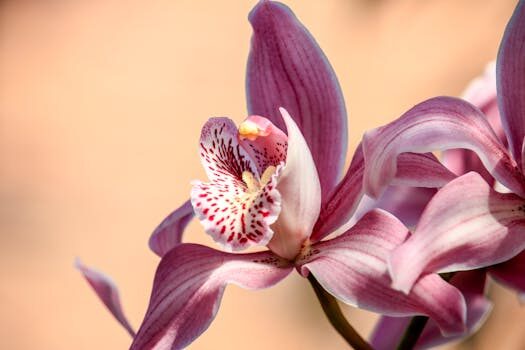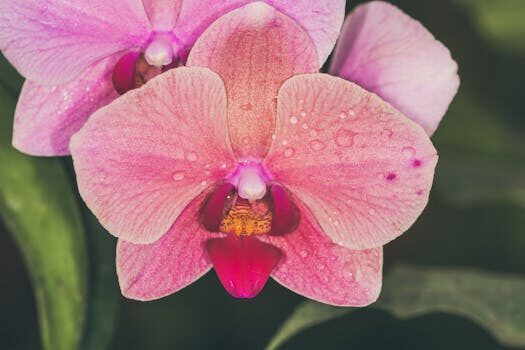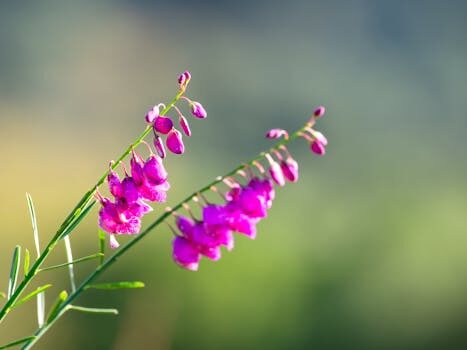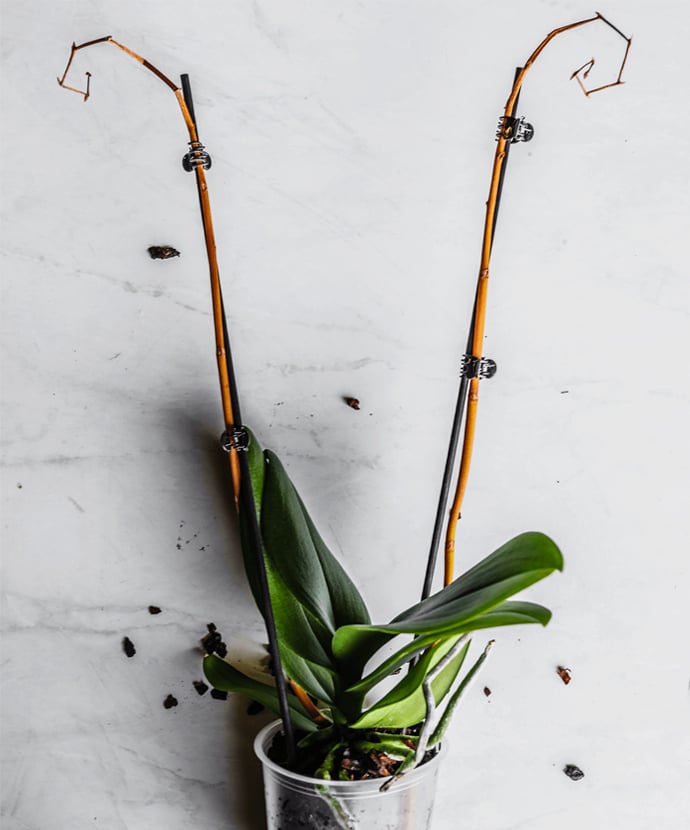Orchids are renowned for their vibrant blooms and exotic allure, but sometimes even the most attentive plant parents find themselves asking, “Why is my orchid dying?”. Despite your best efforts, these delicate plants can show signs of distress, often leaving enthusiasts in despair. The key to orchid care lies in understanding their unique needs and avoiding common pitfalls that lead to their decline.
In this article, we’ll explore common mistakes made when caring for orchids, and how to correct them. With expert explanations, you’ll learn what not to do when nurturing these exotic plants. Whether you’re a seasoned grower or a novice, these insights will help you keep your orchids thriving.
Why is my orchid dying? 5 common mistakes and how to fix them
Orchids are more resilient than often perceived, but certain missteps can lead to their downfall. Here are five common errors orchid owners make:
- Overwatering: Orchids prefer to dry out between waterings. Excess water can lead to root rot, which is often a death sentence for these plants.
- Incorrect lighting: These tropical beauties need bright, indirect light. Direct sunlight can scorch their leaves, while too little light stunts bloom production.
- Unsuitable potting media: Orchids require a well-draining, airy medium, like bark or sphagnum moss, to thrive.
- Temperature extremes: Orchids enjoy a consistent temperature range, generally between 65-80°F (18-27°C). Avoid placing them near drafts or heat sources.
- Fertilizer misuse: A balanced, weak fertilizer solution applied regularly can support growth, but over-fertilization can harm the plant.
Addressing these issues can help revive your orchid and promote healthy growth and blooming.
Is my orchid dead if the stem is brown?
A brown stem can be a sign of distress in orchids, but it does not always mean the plant is dead. If the roots and leaves still appear healthy, cutting back the dead stem to the base can encourage new growth. Proper care and patience are key to recovery.
Why is my orchid dying from the top down?
When an orchid dies from the top down, it could indicate issues such as crown rot or fungal infections. Addressing the root cause and providing the right care can often save the plant. Immediate intervention is crucial for recovery.
Orchid dying from stem: what can I do?
If your orchid’s stem is dying, assess the rest of the plant for health. Removing the affected part and ensuring optimal care conditions can help the orchid recover. Be vigilant for further signs of distress and adjust care as needed.
What does a dying orchid look like?
Signs of a dying orchid include limp, discolored leaves, a mushy base, and brown or black roots. These symptoms indicate that the orchid needs immediate attention, often involving changes in care or environment.

How to revive an orchid with dead roots?
Reviving an orchid with dead roots involves trimming the dead material, repotting in fresh media, and providing optimal moisture, light, and temperature. With the right approach, even orchids with few live roots can recover.
What to do with dying orchid flowers?
When orchid flowers begin to die, trimming the spent blooms can redirect the plant’s energy to its roots and leaves. This will help promote the health of the orchid and encourage future flowering.
How to save a dying orchid with only 1 leaf?
An orchid with a single leaf can still be saved. Focus on providing excellent care, including the right light, water, and humidity. If the remaining leaf is healthy, the orchid has a chance to grow new leaves and roots.
Common mistakes in orchid care
Many orchid problems stem from well-intentioned but incorrect care. Understanding these mistakes is crucial:
- Inadequate watering: Orchids should only be watered when the media is dry, preventing root rot.
- Poor lighting: Orchid leaves should be a light green, indicating they’re receiving the right amount of light.
- Unsuitable environment: Orchids need good air circulation and appropriate humidity to mimic their natural habitat.
By avoiding these errors, you can help your orchid thrive.
Here’s a helpful video “How to Save a Dying Orchid” from a professional grower:
Reviving orchids after overwatering
If you’ve overwatered your orchid, here are steps to help revive it:

- Immediately stop watering and allow the media to dry out.
- Trim any black, mushy roots to prevent the spread of rot.
- Repot the orchid in fresh, well-draining media.
- Resume watering carefully, only when the media is dry.
- Monitor the plant closely for further signs of improvement or decline.
Patience and careful observation can bring an overwatered orchid back to health.
Proper watering techniques for orchids
Watering orchids correctly is vital to their survival. Here’s what you need to know:
- Check the media before watering; it should be dry to the touch.
- Water thoroughly, allowing excess water to drain away.
- Avoid letting the orchid sit in water, which can cause root rot.
- Adjust watering frequency based on temperature, humidity, and light.
Understanding your orchid’s specific needs will guide you to water it properly.
Best practices for orchid care
Here are some expert tips to avoid mistakes and ensure your orchids flourish:
- Correct lighting: Place orchids in bright, indirect light away from direct sun.
- Regular inspection: Check for signs of pests and diseases to act quickly against potential threats.
- Appropriate fertilization: Use a balanced, dilute solution to feed your orchids without causing harm.
- Repotting: Do this every 1-2 years to refresh the potting media and give the roots room to grow.
- Understanding their natural habitat: This will help you recreate the right conditions at home.
By following these guidelines, you can create an ideal environment for your orchids.
Preguntas relacionadas sobre el cuidado de las orquídeas
Is my orchid dead if the stem is brown?
Not necessarily. A brown stem indicates a problem, but the orchid may still be alive. Check for green leaves and healthy roots as signs of life.
If the rest of the plant appears vibrant, you may only need to remove the brown stem and adjust your care routine.
Why is my orchid dying from the top down?
This pattern of death might be due to crown rot or a fungal infection, often caused by water accumulating at the base of the leaves.

To salvage the plant, improve air circulation, reduce humidity, and avoid water on the leaves.
Orchid dying from stem?
If the stem is dying but other parts are healthy, it may be a localized issue. Remove the affected stem and maintain proper care.
Ensure the orchid’s environment mimics its natural habitat as closely as possible.
What does a dying orchid look like?
A dying orchid often has yellow or shriveled leaves, wrinkled roots, and may be flopping over.
Address the care issues quickly to give your orchid the best chance of recovery.
How to revive an orchid with dead roots?
Trim away dead roots and repot the orchid in fresh media. Provide the right balance of light, water, and humidity to encourage new root growth.
With time and proper care, you can revive an orchid even from a few healthy roots.
What to do with dying orchid flowers?
Clip dying flowers to redirect energy to the rest of the plant, which can help stimulate new growth and future blooms.

Focus on maintaining a healthy plant overall, as flowers are an indicator of its condition.
How to save a dying orchid with only 1 leaf?
Even with a single leaf, an orchid can recover if given the right conditions. Pay special attention to watering, light, and humidity.
Be patient, as it may take time for the orchid to regrow lost foliage and roots.
Understanding the unique requirements of orchids and avoiding common care mistakes can ensure the longevity and beauty of these exotic plants. By emulating their natural habitat and being mindful of their specific needs, you can enjoy the lush, vibrant blooms of healthy orchids in your own home.
 Why is my peace lily drooping? 5 common causes and how to revive it
Why is my peace lily drooping? 5 common causes and how to revive it
